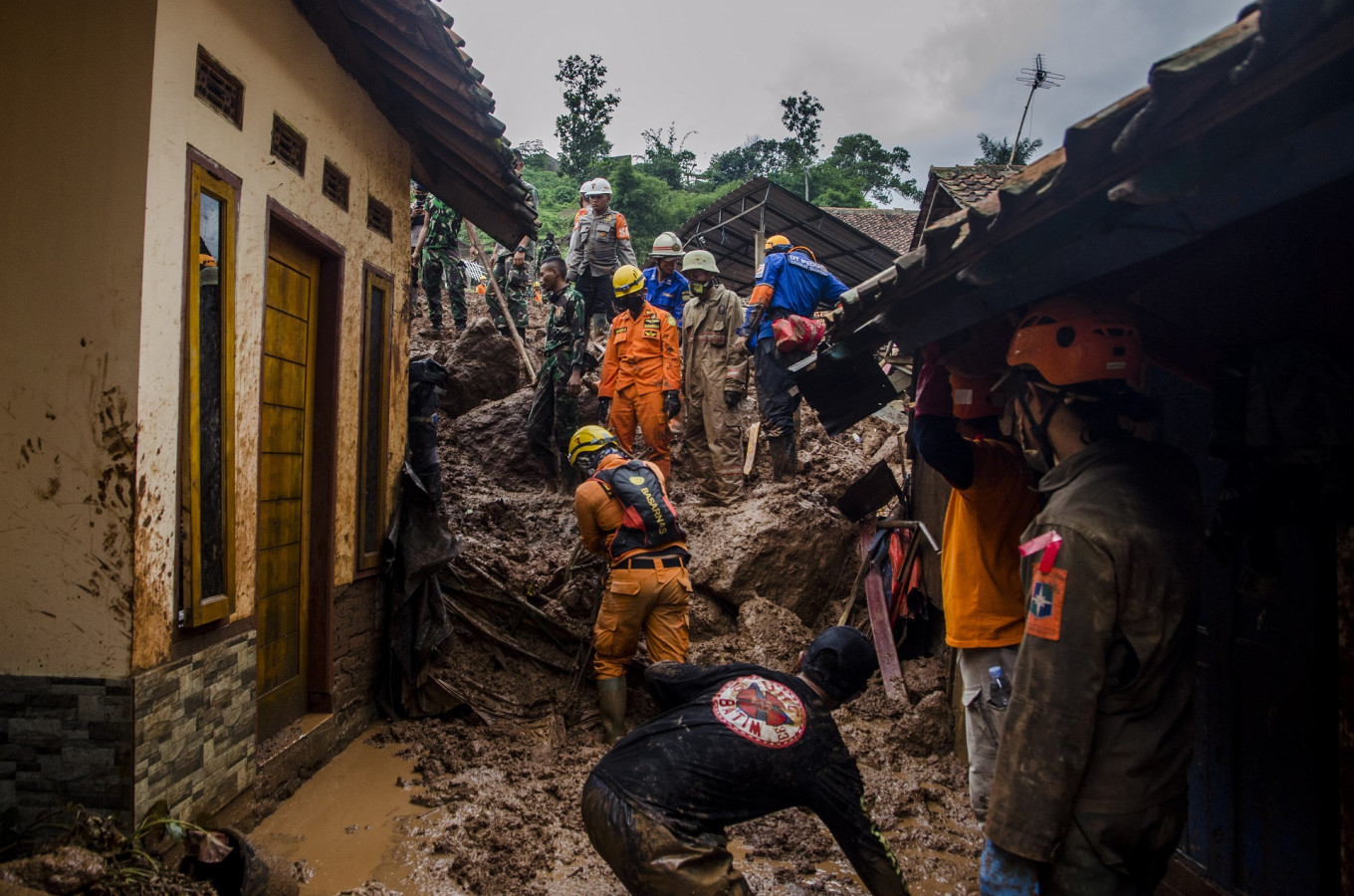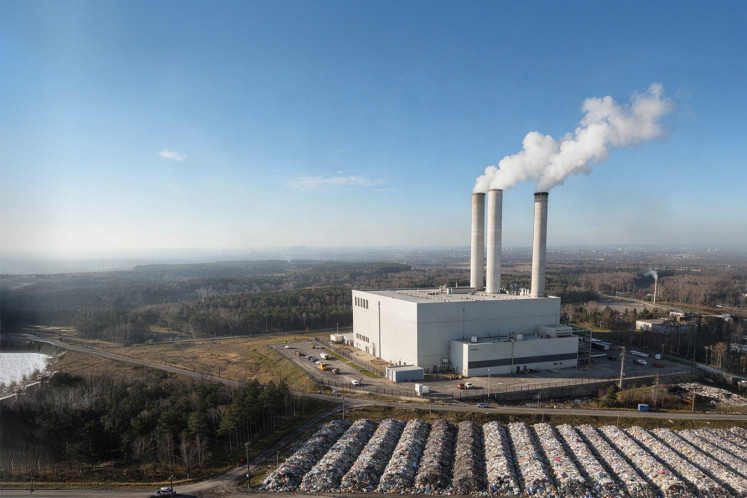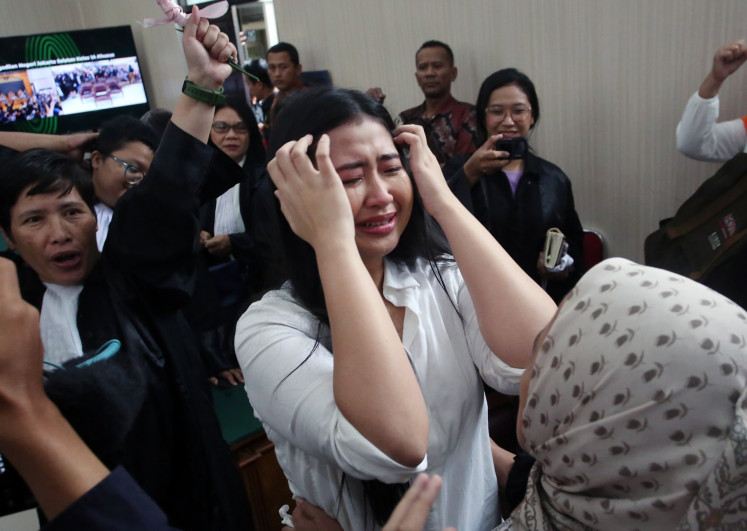Popular Reads
Top Results
Can't find what you're looking for?
View all search resultsPopular Reads
Top Results
Can't find what you're looking for?
View all search resultsStrengthening disaster management for a sustainable future
In fragile and conflict contexts, recovery should foster social cohesion through decisions based on consensus and equitable access to resources by all ethnic groups.
Change text size
Gift Premium Articles
to Anyone
 Joint search and rescue personnel search for landslide victims in Cimanggung district, Sumedang regency, West Java on Jan. 11. A series of landslides occurring in the district claims the lives of at least 19 people, including several rescuers who are evacuating people already buried in a landslide. (Antara/Novrian Arbi)
Joint search and rescue personnel search for landslide victims in Cimanggung district, Sumedang regency, West Java on Jan. 11. A series of landslides occurring in the district claims the lives of at least 19 people, including several rescuers who are evacuating people already buried in a landslide. (Antara/Novrian Arbi)
I
ndonesia’s location on the Pacific Ring of Fire presents an increased risk of natural disaster. The country has seen its fair share of volcanic eruptions, earthquakes, and tsunamis, while climate change has caused a spike in the number of extreme weather patterns, with increased drought, heavy rainfall and floods, and hurricanes.
The government of Indonesia is harnessing technology and data science to build disaster preparedness. In 2016, the National Disaster Mitigation Agency (BNPB), with support from the United Nations Development Program (UNDP) launched “InaRISK”, an application to map out the disaster high-risk areas with impacted population, providing information on the potential of physical damage and financial cost, the potential of economic loss, and the potential of environmental damage.
InaRISK allows the public to see disaster risks in their areas, building disaster preparedness based on data. It is a monitoring tool to map, monitor, and reduce disaster risk for the archipelago country with over 17,000 islands spanning over three time zones.
Around the world, countries which were hit by weather-related disasters due to climate change are struggling to recover as the impact are amplified by the ongoing COVID-19 pandemic. Women bore the brunt of this twin crisis, they were the first ones to lose the jobs in hotels, restaurants, industry and construction. These job losses accounted for nearly two-thirds of the women employed by these sectors. In addition, pre-existing gender inequalities worsened as the multiple duties of women, due to care responsibilities increasing during the crisis.
Across the Pacific Ocean, El Salvador, also a country prone to extreme weather disasters, has had similar initiatives in disaster risk management, when it was hit by Tropical storm Amanda in 2020 at the height of the pandemic.
To assist in the full recovery of the affected people over the longer term, the government of El Salvador conducted an assessment using the globally established Post Disaster Needs Assessment (PDNA) and COVID-19 Recovery Needs Assessment (CRNA) with support from UNDP, World Bank, and the European Union.
The assessment contributes to the practice of assessing crisis that is becoming more complex, multidimensional, and interconnected and with COVID-19 heavily impacting on poverty and inequalities in many societies. To strengthen the institutional environment for implementation of the recovery program, the government of El Salvador is in the process of adopting a regulatory framework.
The government’s engagement in the two processes of the assessment and recovery framework allowed them to shift their approach from disaster response to recovery through reconstruction of infrastructure and addressing the social and economic needs of affected households, which truly enabled most affected people to recover from the twin crisis of the storms and the pandemic. The government also adopted the PDNA methodology as a standard tool to assess the impacts of disasters in the country to inform their recovery processes.
UNDP’s approach to recovery has been rooted in the tenets of resilience, which is one of the six signature solutions in UNDP’s Strategic Plan 2022-2025. Resilient recovery builds the foundation for a sustainable and speedy return to development by aiming to reduce vulnerabilities to recurring hazards, and as a result helping nations like Indonesia reduce the vicious cycle of poverty and vulnerability which impairs progress toward achieving the country’s development goals and the larger 2030 goals for sustainable development.
The critical aspects of UNDP’s work in advancing recovery are enshrined in its policy directives, including the recently drafted UNDP Recovery Policy and Corporate Offer on Crisis and Fragility. These documents articulate the key recovery processes and principles of assistance to countries.
More importantly, they highlight UNDP’s commitment to a people centered recovery process focusing on people with disabilities, women, aged, ethnic minorities, and those left behind with livelihoods, housing, and skills to rebuild better and stronger. In fragile and conflict contexts, recovery should foster social cohesion through decisions based on consensus and equitable access to resources by all ethnic groups.
Additionally, the draft policy also states that recovery programs should be informed by risks. Building back better or stronger in this context of recovery would be to ensure that all public infrastructure and housing is disasters resilient to withstand impacts of future disasters and people have a strong support system built through better social protection, insurance, access to credit, alternative livelihoods.
It also advocates for recovery and reconstruction process to rebuild natural assets, restore degraded land, and regenerate biodiversity, use renewable energy thus contributing to reducing the impacts of climate change.
The experience of El Salvador and Indonesia show how governments, civil society, vulnerable groups, development partners and the private sector could organize recovery and initiative to plan for disaster risk reduction, and manage complex crises with which many economies are grappling.
The fifth edition of the World Reconstruction Conference (WRC) on May 23-24 in Bali offers the unique opportunity to listen to lessons and shared experiences of national governments.
Hosted by UNDP in collaboration with the World Bank/Global Facility for Disaster Reduction and Recovery (GFDRR), United Nations Office for Disaster Risk Reduction (UNDRR) and the International Recovery Platform (IRP), the WRC will have over 1,500 hybrid participants (in-person and remote) and is organized to: 1) take stock of approaches, tools, and methodologies as well as best practices to address the socio-economic effects of the pandemic; 2)reiterate our commitment to build back better, greener and more sustainably; 3) propose more effective planning, financing, management tools and institutional systems for complex and interconnected events.
The conference takes us closer to a shared commitment of risk informed and resilient recovery. The collaboration of UNDP with the governments of Indonesia and El Salvador provides an example of just that.
***
The writer is a recovery advisor a.i. at the United Nations Development Program.










